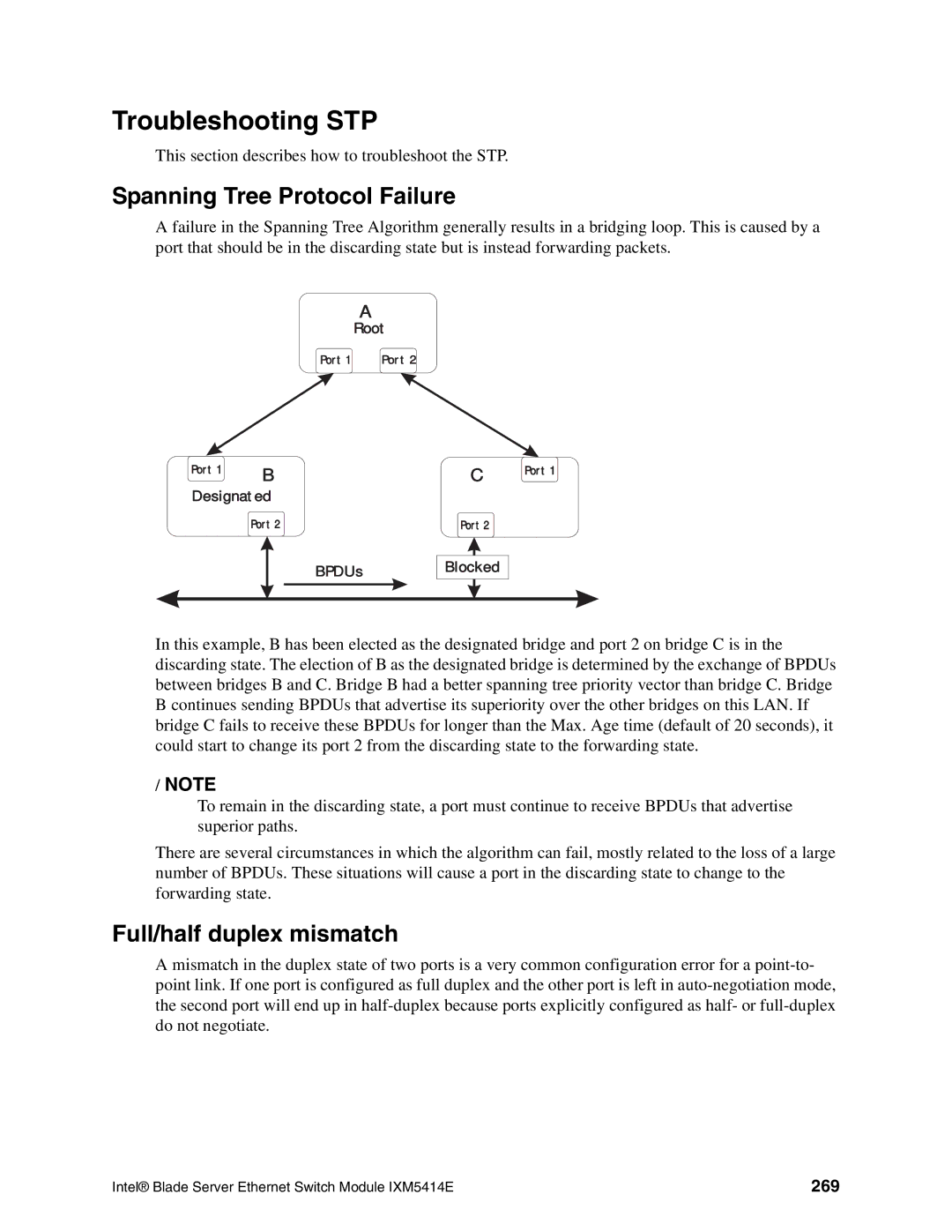
Troubleshooting STP
This section describes how to troubleshoot the STP.
Spanning Tree Protocol Failure
A failure in the Spanning Tree Algorithm generally results in a bridging loop. This is caused by a port that should be in the discarding state but is instead forwarding packets.
A
Root
Port 1 | Port 2 |
Port 1 | B | C |
|
Designated
Port 1
Port 2 | Port 2 |
BPDUs
Blocked
In this example, B has been elected as the designated bridge and port 2 on bridge C is in the discarding state. The election of B as the designated bridge is determined by the exchange of BPDUs between bridges B and C. Bridge B had a better spanning tree priority vector than bridge C. Bridge B continues sending BPDUs that advertise its superiority over the other bridges on this LAN. If bridge C fails to receive these BPDUs for longer than the Max. Age time (default of 20 seconds), it could start to change its port 2 from the discarding state to the forwarding state.
/NOTE
To remain in the discarding state, a port must continue to receive BPDUs that advertise superior paths.
There are several circumstances in which the algorithm can fail, mostly related to the loss of a large number of BPDUs. These situations will cause a port in the discarding state to change to the forwarding state.
Full/half duplex mismatch
A mismatch in the duplex state of two ports is a very common configuration error for a
Intel® Blade Server Ethernet Switch Module IXM5414E | 269 |
